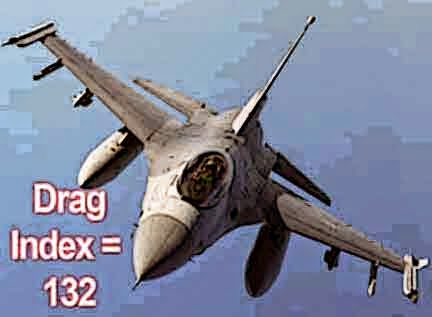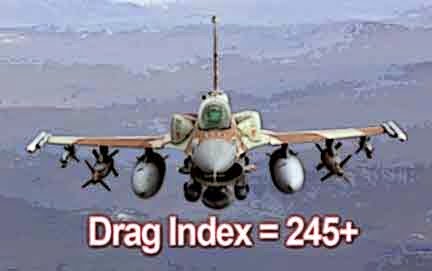Philip wrote:Adm.Greenert has been quoted correctly. He said what he said which I've highlighted."Stealth may be overrated". You "cannot be invisible". His focus is on equipping the USN with more stand-off PGMs ,for "bomb trucks" in an earlier quote where he said the equiv of "why buy an expensive sports car when a bomb truck can do the business". The advantage that the US has over everyone else is that it already has the F-22 in service which gives it a huge advantage along with its huge NCW assets from sats,specialised aircraft,EW,etc. The vulnerability of it against the PRC was envisaged in the event of the PRC attempting to "take away" Taiwan,with the US intervening on the side of Taiwan, and that given its huge numbers of modern aircraft it could bring to bear against USN carriers and island based F-22s,the US would find the going v.hard and lose. If the Chinese are the aggressor attempting to dominate the oceans,littoral nations of the Indo-China Sea,the opposite is most likely to happen as it does not possess he required expeditionary power projection /amphib forces necessary. This is why it is building/expanding the footprint of islands/atolls to improve the infrastructure and plant troops and mil eqpt. on them.
More recent AWST issues also have reports on new anti-stealth radars being developed by Russian and China and the US's growing interest in IRST sensors common on Russian aircraft. UCAVs will be pressed into service increasingly as a consequence.
The CNO said that stealth does not = invisibility. No conflict there. The USAF has said the same. He said that you cannot completely hide passively using stealth. Again, this has been known for a long time. Why do you think Billions are being spent on the DAIDS on the B-2? Or the EW package on the F-22 and F-35? Stealth is a means of breaking kill chains, just as EA and EW are means of breaking a missile lock etc. If you can get in and get out and present 1/5 of the reaction time to the opponent because you are A) Extremely hard to find, or track and B ) You have altitude, speed and Electronic warfare systems on board - then you increase your survivability and mission-effectivness. This has been the solution ever since the SR-71. That aircraft used speed and some modest RCS reduction. Subsequent aircraft were able to use very high degree of RCS reduction. Then the B-2 brought in large mission systems, high SA, Defensive suites and VLO. The F-22A, speed, stealth and even higher data processing. The F-35 brings Stealth, supersonic speed, EA/EW and the most comprehensive SA setup the US has ever developed. Add to that you have the recipe for cooperative target engagement built into the concept from the start (MADL).
Now coming to the second parts on BOMB TRUCKS and Payloads. The F-35C is perfect for that. It can easily be configured in any form or shape be it for the first strike configuration or fully laden with bombs and pods. It has 2X the loiter and range compared to the Hornet family that needs a high degree of tanker support. Furthermore it has all the sensor packages embedded. Want to integrate NiFCCA? It can be done..Want stealthy data sharing? Already possible with MADL..Want EW somewhat of a mini-growler like thing , possible since there are 2 EW avionics racks that are currently vacant. Its the perfect platform for that mission because it does everything thanks to its stealth, open architecture and a computing system that can sustain growth - something that the F-18 family cannot.
Now coming to the "stealth" is useless claim. Again, the context was - stealth by itself is useless. Which is pretty much how every stealthy aircraft has been designed since the F-117.
Now there is a publicly available RFI for the USN's F-18E/F replacement. Take some time and read it. If not, then look at what the OEM's responding to that document proposed. I'll make it easy for you : -

See a similarity? These are aircrafts proposed as per USN issued RFI's. Both designs very heavily use stealth as a design objective in order to ensure the survivability requirements asked for by the USN in the RFI.
As the CNO later clarified, the F-35C has stealth but on top of that it has a whole lot more. It has a very comprehensive sensor suite, a computing and data fusion that is 4 times as large as the F-22A and the ability to share information like no other aircraft before it. On top if it, unlike the Rhino it has the ability to provide its own EA/EW component for all its missions.
Once you have read the FA-XX RI you can perhaps research into the history of the JSF program. If you dig deep enough you will realize that it was the USN that wanted greater stealth claiming the F-35 would be the only stealth fighter in its inventory. The USAF wanted a slightly reduced survivability in order to keep costs down, it was the USN that wanted greater stealth, greater payload and greater sensor coverage (They wanted EOTS on every aircraft as compared to the USAF's every other aircraft requirement).
His focus is on equipping the USN with more stand-off PGMs ,for "bomb trucks" in an earlier quote where he said the equiv of "why buy an expensive sports car when a bomb truck can do the business"
Which means absolutely nothing in this context. The F-35C is an ultimate aircraft if ^^ is what you are looking for. It has the best stand off PGM capability that the navy could possibly seek (Thanks to Block 4 UAI integration), it has the sensors both onboard and through CNI to go deep and provide the sort of targeting cues for stand off weapons. It also has the non-kinetic options in the cyber and EA/EW domains. BTW it along with the P-8 are the only 2 platforms that can provide seamless cues to the Growlers for EA mission. The Super Hornet cannot without upgrades.
The advantage that the US has over everyone else is that it already has the F-22 in service which gives it a huge advantage along with its huge NCW assets from sats,specialised aircraft,EW,etc.
The Navy does not have F-22A's and if it deploys out at a moment's notice it cannot count of F-22's for some time. Thats why they wanted 'better than F-22' stealth on the JSF. Its there main penetrating aircraft and would be until the FA-XX comes online in the 2030's.
More recent AWST issues also have reports on new anti-stealth radars being developed by Russian and China and the US's growing interest in IRST sensors common on Russian aircraft. UCAVs will be pressed into service increasingly as a consequence.
The most recent article is nothing more than a collection of older articles into one essay. The author's are reporters and not analysts. They present little as far as analytical ability or technical competence to mean much other than just taking known facts and rehashing them into a new article. The USN has decades of experience with IRST's. They are nothing new. The computing available however is something very new and that is what the larger investment is focusing on. The sensor is useless if you cannot compute "out" the false alarms. Otherwise it would be at best a short range choice.
Regardless all stealthy aircraft have strict IR signatures they are supposed to meet and the growing interest in stealth seems to speak volumes. Even the IAF seems to want a stealthy design for the AMCA. The Koreans for the F-X, the Japanese for their aircraft and the europeans want the same for their UCAV's. Heck even the russians want that.
UCAVs will be pressed into service increasingly as a consequence.
Only once they figure out "survivability" in a denied environment. Until then they won't contribute much in the penetrating mission. There was no interest for the J-UCAS from the USAF, the UCLASS had the Navy resist the Mini-B-2 mission because of survivability challenges in contested or denied environments. The Avenger has a limited acquisition that too through the CIA and not the USAF directly. There is a huge problem in keeping the comms and data link pipelines required to operate successfully with high cost UCAV's in an environment that has Data links contested and GPS/SATCOM denied. That basically limits the complexity of the mission systems. Without highly capable mission systems you cannot design a UCAV to go out and perform very complex strike missions.
The solution most likely lies in the RQ-180, LRS-B combo but that is being designed completely in secrecy most likely because this has been a very hard to develop and field capability and is hardly going to trickle down to Predator like tactical systems anytime soon.
So, IMHO, their philosophies are very different, which reflects on the what they fund. So "stealth" has totally different meaning to each of them. I would not compare one with the other. What is key, is if "stealth" fits into their philosophies/doctrines.
The meaning has to be properly understood. Some find that hard.
Lets look at what the USN has been wanting over the last 10-20 years -
- NATF - The stealthiest option at the time
- A-12 - Stealthiest option, way ahead of its time
- F-35 - As has been claimed ' stealthier than the F-22A '
- FA-XX - Look at the pictures above - the terminology being thrown around by the OEM's is ELO or extreme Low observability
What else has happened since then?
- J-UCAS - Signature suppression , UCLASS - signature supression , RQ-180 - Signature suppression, LRS-B - Signature supression.
See any trends?

Bottom Line - The next generation fighters, whether it is the USN FA-XX or the US NGAD/FX will see a quantum jump in low observability, data fusion, processing power and sensor capability. This is what they are working on at the moment and what these designs would reflect. You would need this because everything would have become better from a threat perspective. Stealth would continue to be at the forefront of cutting edge designs as long as there is no alternative to deny a combat or mission kill as comprehensively. If you can find an alternative, you would shift towards that. Hypersonic speed aircraft could be that but that technology is not going to be ready by the 2030's. Perhaps 2050-2060 is a better time to introduce that into an aircraft.

























